Identification of Material Topics
The Sustainability Report serves as an important channel for GIGABYTE to communicate our sustainability management practices and performance to stakeholders. The materiality analysis process helps to identify the sustainability topics that should be disclosed in the Sustainability Report. A materiality analysis is conducted by GIGABYTE each year in accordance with the GRI Standards 2021. Sustainability topics are periodically updated based on international sustainability standards and trends, the Company’s business goals, as well as the material topics of benchmark enterprises and peers. Investigation of stakeholder concern on sustainability topics as well as analysis of how sustainability topics impact on operations and sustainable development are used to rank material topics for the year. The disclosure of related information is also prioritized in the Sustainability Report. The double materiality approach was adopted in 2024 to investigate and analyze the business impact of sustainability topics more closely, as well as the positive and negative impacts on the economy, environment, society, and human rights.
Click here to join the survey and provide your concerned topics about GIGABYTE
Identification Process of Material Topics
Impact on Sustainability Material Topic
In 2024, we identified materiality analysis of 21 sustainability issues identified material topics including: Brand strategy and reputation management, Code of Ethics and Conduct, Corporate Governance, Supply Chain environmental and Social Impact Management, Customer Relationship Management, Innovative Management, Product Stewardship Responsibilities, GHG and Energy Management, Climate Strategy and Risk Management, Talent Recruitment and Retention, Talent Cultivation and Development, and Occupational Health and Safety.
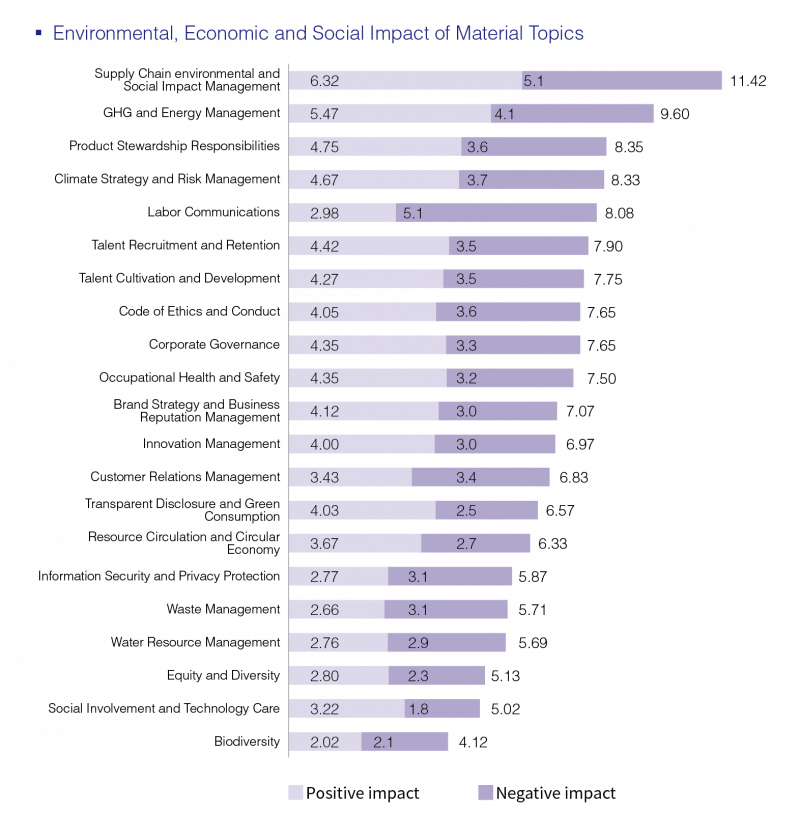
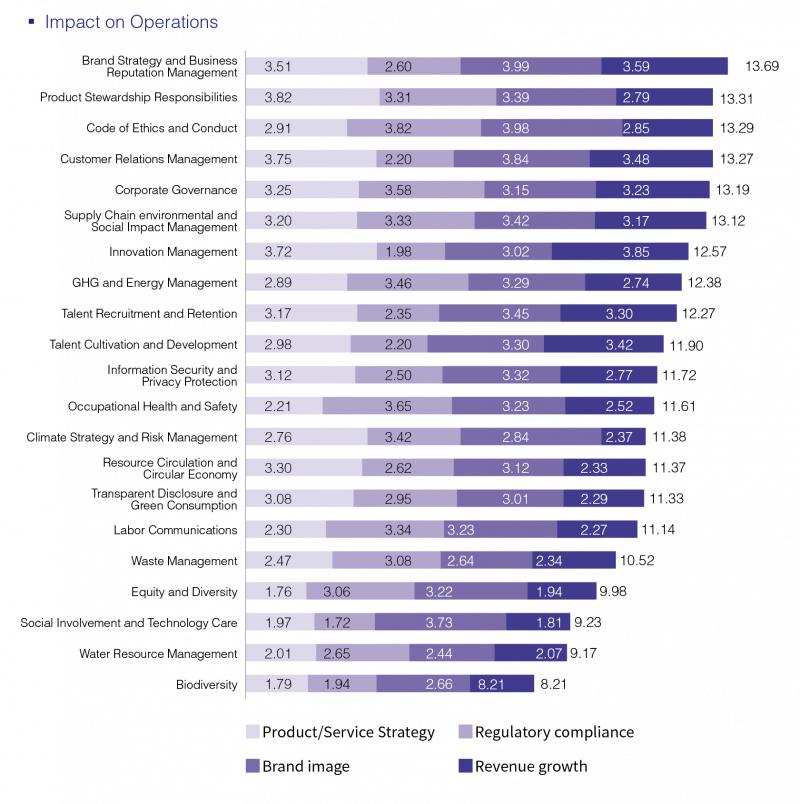
GIGABYTE Material Topics Matrix
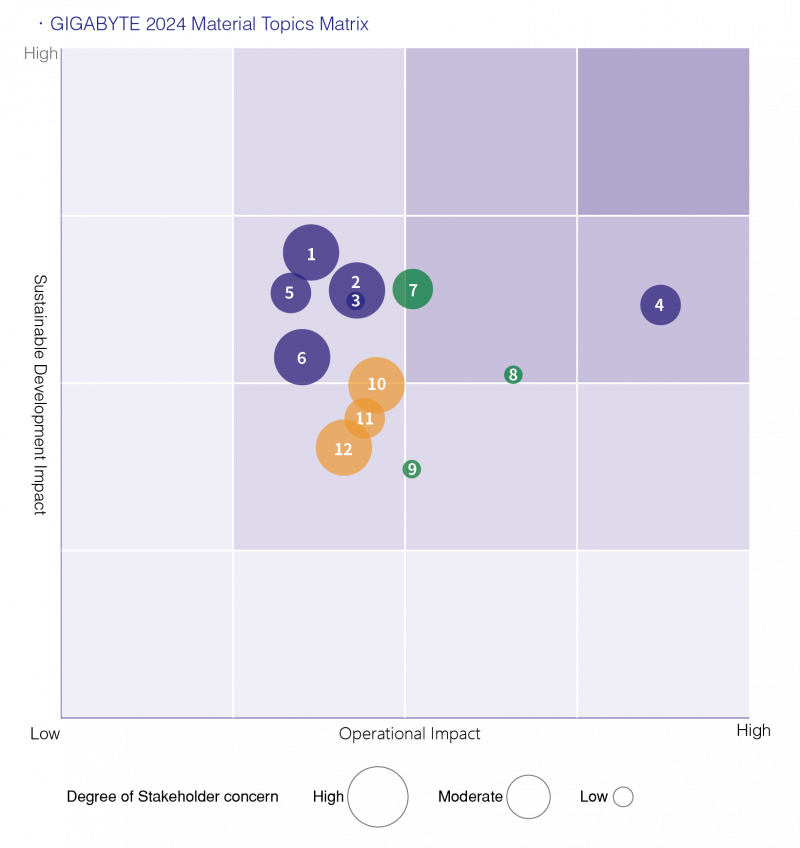
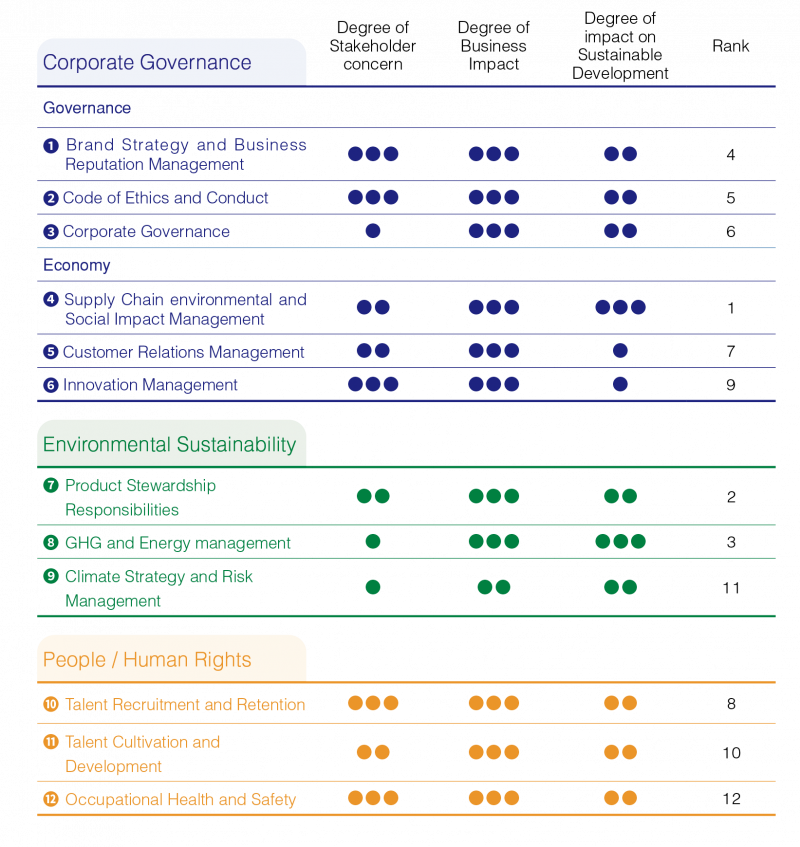
Material Topics and Impact Boundaries
To help stakeholders understand the impacts of each material topic on the company, the overall value chains, the environment, and society, we elaborate a matrix table to present the direct impacts and indirect impacts each material topic may cause.“▲” means direct impacts indicating that the material topic has a direct impact on that boundary. “△” means indirect impacts indicating that the material topic has an indirect impact on that boundary, or is linked to that boundary for commercial reasons. Impacts were also broken down into categories “potentially positive ⊕”, “potentially negative Θ”, “actually positive ”, and “actually negative
”.
[Note] The “Society” encompasses stakeholders such as investors, media, government, communities/non-profit organizations/schools.
Corporate Governance
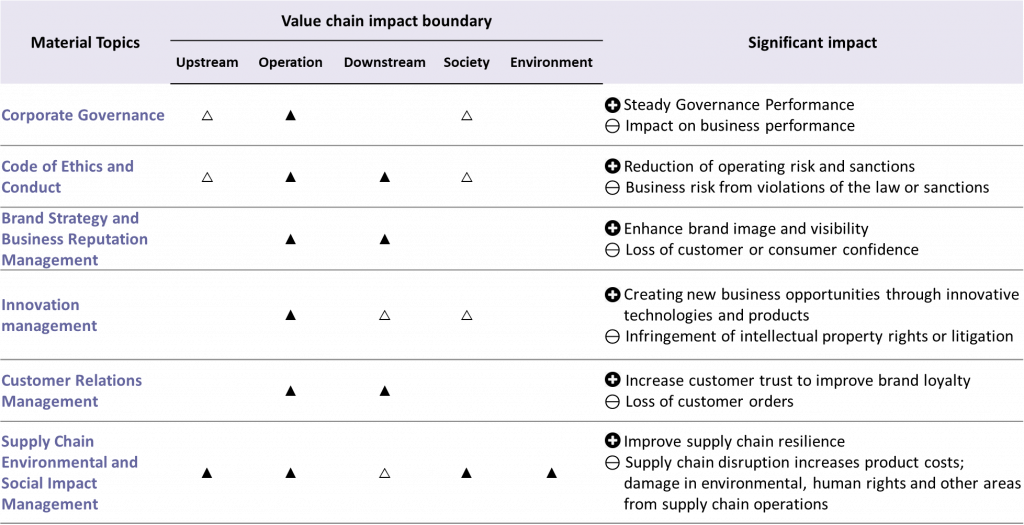
Environmental Sustainability

People / Human Rights

Material Topic Management and Outcomes
| Material Topics | Responding Chapter in 2024 Sustainability Report |
|---|---|
| Corporate governance | 2.1 Organization of Corporate Governance |
| Code of Ethics and Conduct | 2.2 Integrity Management and Legal and Regulation Compliance |
| Brand Strategy and Business Reputation Management | 2.7 Brand Strategy and Business Reputation Management |
| Innovation Management | 2.5 Innovation Management |
| Customer Relations Management | 2.6 Customer Relations Management |
| Supply Chain Environmental and Social Impact Management | CH4 Sustainable Value Chain |
| GHG and Energy Management | 3.1.1 GHG and Energy Management |
| Climate Strategy and Risk Management | |
| Product Stewardship Responsibilities | 3.3 Product Stewardship |
| Talent Attraction and Retention | 5.2.2 Talent Attraction and Retention |
| Talent Cultivation and Development | 5.2.3 Talent Cultivation and Development |
| Occupational Health and Safety | 5.3 Occupational Health and Safety |
- Home
- Innovation Management
- The Guanxi Blue Zone
- The Ocean is Our Home
- From the Chairman
- Commitment to CSR
- Stakeholder Engagement
- Material Topics
- SDGs
- Corporate Organization
- Code of Conduct
- Information Security & Privacy
- Risk Management
- Supply Chain Management
- Tetralogy of Supply Chain Engagement
- Conflict Mineral
- Environmental Management Policy
- Brand Strategy and Business Reputation Management
- Climate Strategy and Risk Management
- Customer Relations Management
- Eco-friendly Product
- Extended Product Responsibility
- Biodiversity
- Circular Economy
- Green Action
- Sustainability/Environmental Education
- Green Activities
- Working Holiday
- Corporate Volunteering
- Go Green Taiwan
- Make Earth Green Again
- Tree Map
- Overview/Core Concept
- Rooftop Farm
- Ecology Photo Competition
- Sustainability-related Certification
- Diverse and Inclusive Workplace
- Talent Management
- Human Rights Management
- Talent Cultivation and Development
- Occupational Safety
- Health Care
- Upgrade Your Life
- Social Inclusion
- CSR Milestone
- Economic Aspect
- Environmental Aspect
- Social Aspect
- CSR Report
